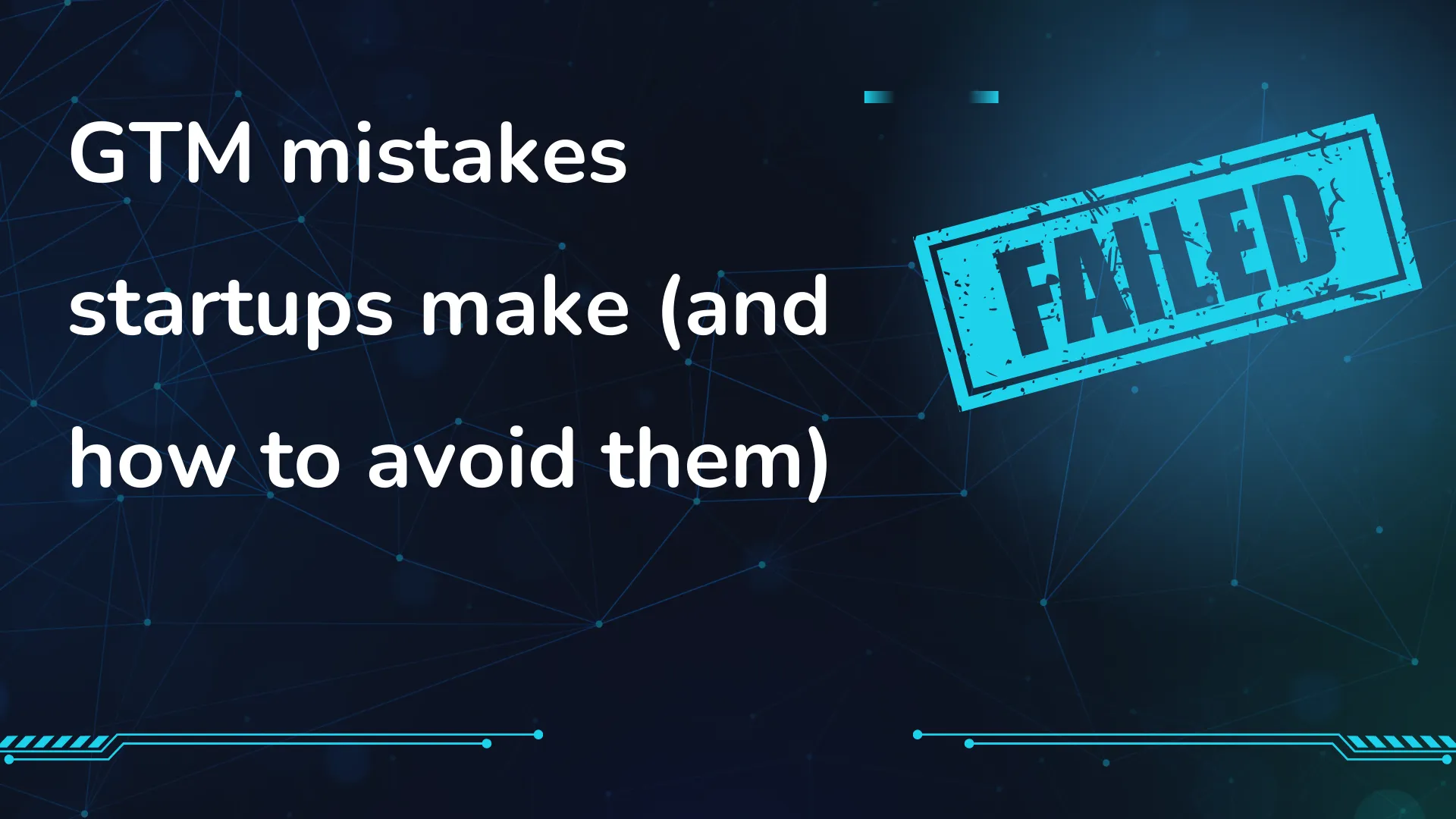GTM strategy mistakes startups make (and how to avoid them)
Learn the 5 most common go-to-market mistakes early-stage startups make—and how to fix them with focused strategy, smart distribution, and meaningful metrics.
A good product isn’t enough. To grow, you need the right go-to-market (GTM) strategy.
In fact, research shows that many startups fail not because their product is weak, but because their market approach is misaligned.
After talking to dozens of founders, we’ve noticed the same mistakes come up again and again. The good news? They’re easy to spot and fix once you know what to look for.
1. Spreading across too many channels
Early-stage teams often feel pressure to be everywhere: LinkedIn, TikTok, SEO, email, outbound, PR… the list goes on.
The result? Thin resources, inconsistent messaging, and no single channel that actually scales.
How to fix it:
- Start small: test 2–3 channels at most
- Double down on the one that shows early traction
- Build repeatable processes before expanding
2. Not defining an ICP (Ideal Customer Profile)
Many founders launch with “our product is for everyone.” In reality, “everyone” means “no one.”
If you don’t know who you’re solving a problem for, your GTM will feel generic and your growth will stall.
How to fix it:
- Define a clear ICP: industry, company size, job role, pain point
- Use customer interviews and early data to refine it
- Write your messaging like you’re talking directly to that ICP
3. Copying competitors blindly
It’s tempting to look at a successful competitor and think: “let’s just do what they’re doing.”
The problem? You don’t know if their playbook works for them – or if it only looks like it does. Copying often leads to implementing tactics that don’t fit your stage, your product, or your customers.
How to fix it:
- Borrow inspiration, not strategy
- Validate ideas with your own experiments
- Remember: what worked for a scaled company may kill momentum at an early stage
4. Ignoring distribution until it’s too late
Founders love building features. But a GTM strategy isn’t about what you build – it’s about how it gets in front of the right people.
Waiting until “after launch” to think about distribution is one of the biggest killers of growth.
How to fix it:
- Plan distribution alongside product development
- Ask: how will people hear about this feature? Who will share it? Why would they care?
- Treat distribution as part of the product itself
5. Measuring vanity metrics instead of real progress
It’s easy to celebrate likes, impressions, or press mentions. But these don’t pay the bills.
Without the right metrics, you might think your GTM is working while revenue tells another story.
How to fix it:
- Focus on metrics that matter: CAC, payback period, activation rate, retention
- Align metrics with your stage (don’t look for “scale” numbers at pre-seed)
- Use small wins (conversions, demos booked, customers retained) as your north star
.svg)
